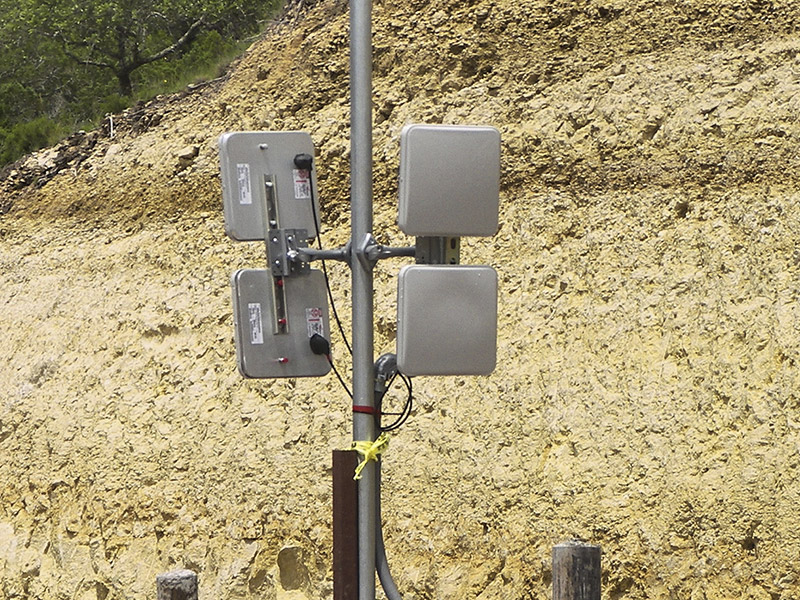What is Radio Frequency Identification?
A basic RFID system consists of three components:
Antenna
An antenna or coil;
Transceiver
A transceiver (with decoder);
Transponder
A transponder (also called a tag) that is electronically programmed with information.
The antenna emits radio signals to activate the tag, read and write data. The antenna is the channel between the tag and the transceiver, which controls data acquisition and system communication. The antenna can have various shapes and sizes and can be installed in places such as doors, to capture the data of people or objects identified with tags passing through it, or mounted in a toll booth to monitor traffic on a motorway, for example . The electromagnetic field produced by an antenna can be constant, but if continuous reading is not required, the field can be activated by a sensor.
Normally the antenna is packed with the transceiver and the decoder to become a reader, which can be configured as a handheld or a fixed reader to be connected to the central computer. The player emits radio frequency waves with varying ranges depending on the player and the tag. When the tag passes through the electromagnetic field zone, the activation signal from the reader is detected. The reader decodes the tag's integrated circuit data and the information is passed to the computer.
RFID tags have a wide variety of shapes and sizes. The tag used for animal identification may be less than 3 mm in diameter and 10 mm in length. The tags can take the form of a nail, to identify trees and wooden articles, or a credit card, for access control applications.
RFID tags are classified as either active or passive. Assets are powered by an internal battery and are typically read / write. The tag data can be written and modified as needed. The memory size of the active tag varies according to application requirements - some systems operate with up to 1MB of memory. The battery-provided tag achieves a longer range and can be read up to 10 m away from the player. However, there is the disadvantage of larger size and a cost increase, as well as the limited battery life that can last for up to 10 years.
Passive tags operate without external power supply and are activated by the electromagnetic field emitted by the reader. Passive tags are consequently much lighter and smaller than active tags, much cheaper, and offer virtually unlimited operational life. The disadvantage is that they have less reach than active tags and require a more powerful reader for reading the data. Passive tags can be read-only or read-write.
RFID systems are also distinguished by their frequency. Low frequency systems (30 kHz to 500 kHz) have low read range and low cost. They are most commonly used in access control and animal identification applications. High frequency (850 MHz to 950 MHz and 2.4 GHz to 2.5 GHz) systems with high read range and read speeds are used for applications such as locating train cars and automated toll collection. However, better high-frequency performance means higher costs.

The significant advantage of all types of RFID systems is that it does not require contact or field of view to read the tag. Tags can be read through a variety of substances like water, fog, ice, paint, dirt, plastics, wood and in environmental conditions where the bar code or any other optical technology would be in vain. RFID technology also allows reading under challenging circumstances and at remarkable speeds - in most cases, the response is less than 100 milliseconds. The read / write capability of an RFID system is also a significant advantage in interactive applications such as maintenance control, although it is a more expensive technology compared to the bar code. RFID has become indispensable for a wide variety of data collection and automated identification applications that would not be possible with other technologies.
Developments in RFID technology continue to enhance the system with increased memory capacity and read ranges beyond faster processors. It is very difficult for the technology to replace the bar code. Even with price cuts, a transponder tag will never be as cheap as a barcode label. However, RFID will continue to grow in its established niches where bar code or other optical technologies are not effective. If standards are defined for RFID systems in order to make systems compatible with different manufacturers, the RFID market must grow exponentially.

